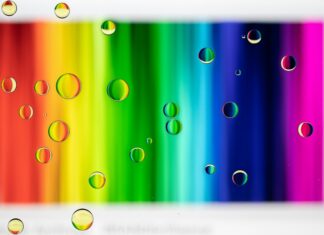Hydrogel is a remarkable and versatile material that has found its way into a multitude of applications, ranging from healthcare to industry and beyond. This gel-like substance, composed primarily of water and a crosslinked polymer network, possesses extraordinary properties that make it an indispensable player in various domains of science and technology. As we embark on a journey through the fascinating world of hydrogel, we discover a material that is not only exceptionally versatile but also holds the promise of shaping our future in profound ways.
The term “hydrogel” itself provides a hint of its composition, with “hydro” referring to water. It’s a substance that contains a significant amount of water within its structure while maintaining its solid or gel-like form. This unique characteristic is at the heart of hydrogel’s versatility, as it can retain large amounts of water without dissolving, making it ideal for various applications where controlled hydration and moisture retention are essential. Hydrogel, in essence, is a water-absorbing, three-dimensional network that can be tailored to suit a wide range of purposes.
High Water Content:
Hydrogels typically have a high water content, often exceeding 90%, which allows them to mimic the properties of natural tissues and provide a moist environment.
Biocompatibility:
Hydrogels are biocompatible, making them suitable for use in various biomedical applications, including drug delivery, wound healing, and tissue engineering.
Tunable Mechanical Properties:
The mechanical properties of hydrogels, such as stiffness and elasticity, can be adjusted to match specific tissue types or applications.
Controllable Swelling:
Hydrogels exhibit controllable swelling behavior, allowing them to absorb and release water in response to environmental conditions or stimuli.
Drug Delivery:
Hydrogels are used as drug delivery vehicles, as they can encapsulate and release therapeutic agents in a controlled and sustained manner.
Tissue Engineering:
Hydrogels serve as scaffolds for tissue engineering, providing a 3D environment for the growth and regeneration of cells and tissues.
Wound Dressings:
Hydrogel wound dressings maintain a moist wound environment, promote healing, and can be easily removed without causing trauma to the wound.
Contact Lenses:
Soft contact lenses are often made from hydrogel materials due to their water-retaining properties, which enhance comfort for wearers.
Hydration in Agriculture:
Hydrogels are used in agriculture to improve soil water retention, reduce water usage, and enhance crop growth in arid regions.
Smart Hydrogels:
Some hydrogels are “smart” and can respond to external stimuli such as pH, temperature, or ion concentration, allowing for controlled drug release or other responsive behaviors.
These key features highlight the diverse range of applications and properties that make hydrogels valuable in various fields, from healthcare to agriculture and beyond.
Hydrogels are like chameleons of the material world, adapting and responding to their surroundings in fascinating ways. They are a testament to the ingenuity of science and engineering, demonstrating how even the simplest of materials can be transformed into multifaceted wonders.
One of the striking qualities of hydrogels is their ability to hold and release water. They are, in essence, water reservoirs that can capture moisture and hold it within their three-dimensional network. This property is not just about wetness; it’s about the ability to maintain an environment that is conducive to life. In the world of hydrogel-based wound dressings, for example, this feature is a game-changer. It creates an oasis of moisture around wounds, promoting healing and reducing the risk of infection. In a way, hydrogels become like the body’s own nurturing embrace.
But hydrogels don’t stop at being passive water reservoirs; they are also responsive materials. Some hydrogels can react to changes in their environment, swelling or shrinking in response to variations in temperature, pH, or ion concentration. This responsiveness is akin to a form of communication with their surroundings. It’s as if they can sense and adapt to the needs of their environment, making them valuable in controlled drug delivery systems. Imagine a hydrogel-based drug delivery device that releases medication precisely when and where it’s needed, responding to the body’s cues.
In the realm of hydrogels, simplicity meets complexity. At their core, hydrogels are composed of just a few ingredients: water and a crosslinked polymer network. Yet, within this seemingly straightforward structure lies a world of complexity. The arrangement of polymers, the degree of crosslinking, and the choice of polymers all contribute to the unique properties of a hydrogel. It’s a bit like the art of baking, where a few basic ingredients can be transformed into a vast array of delicious treats by varying proportions and techniques.
The world of hydrogels is also a world of diversity. These versatile materials can be tailored to suit a wide range of applications. Some hydrogels are soft and pliable, mimicking the characteristics of biological tissues. Others are stiffer and more rigid, suitable for industrial uses like wastewater treatment. This diversity is a testament to the adaptability of hydrogels, proving that they are not one-size-fits-all materials but rather chameleonic substances that can be molded to meet specific needs.
The applications of hydrogels span a wide spectrum, from the mundane to the extraordinary. In everyday life, you might encounter hydrogels in disposable diapers, where they play a crucial role in keeping babies dry and comfortable. They are also used in the food industry to trap and release moisture, preserving the freshness of fruits and vegetables during storage and transportation. In these applications, hydrogels are like unsung heroes, silently contributing to our daily comfort and convenience.
In the realm of healthcare, hydrogels take on a more prominent role. They become the building blocks for tissue engineering, providing a scaffold for the growth of cells and tissues. In regenerative medicine, hydrogel-based materials offer hope for repairing damaged organs and tissues, bringing us closer to a future where complex surgeries and organ transplants might be replaced with regenerative therapies. It’s a vision of medicine that harnesses the body’s own healing abilities, with hydrogels as the stage where this miraculous transformation unfolds.
As we journey further into the world of hydrogels, we encounter another remarkable quality: their biocompatibility. This means that hydrogels are well-received by the human body, minimizing the risk of adverse reactions. They become like friendly companions in the world of medicine, supporting healing processes and enhancing patient comfort. In contact lenses, hydrogels ensure that wearers can enjoy clear vision without discomfort. In wound dressings, they create a soothing and nurturing environment for healing to take place.
The story of hydrogels is also intertwined with sustainability. In a world where water is an increasingly precious resource, hydrogels offer a way to reduce water usage in agriculture. They can improve soil water retention, reducing the need for excessive irrigation. In a sense, hydrogels become custodians of water, helping to conserve this vital resource and promote sustainable agriculture in a water-scarce world.
In conclusion, hydrogels are not just materials; they are storytellers of science and innovation. They teach us that simplicity can yield complexity, that adaptability is a prized trait, and that even the most unassuming substances can have a profound impact on our lives. Hydrogels are like silent partners in our daily existence, supporting our comfort, health, and the sustainability of our planet. They are a testament to the marvels of material science, where a gel-like structure can hold the promise of a better, more sustainable future.


















